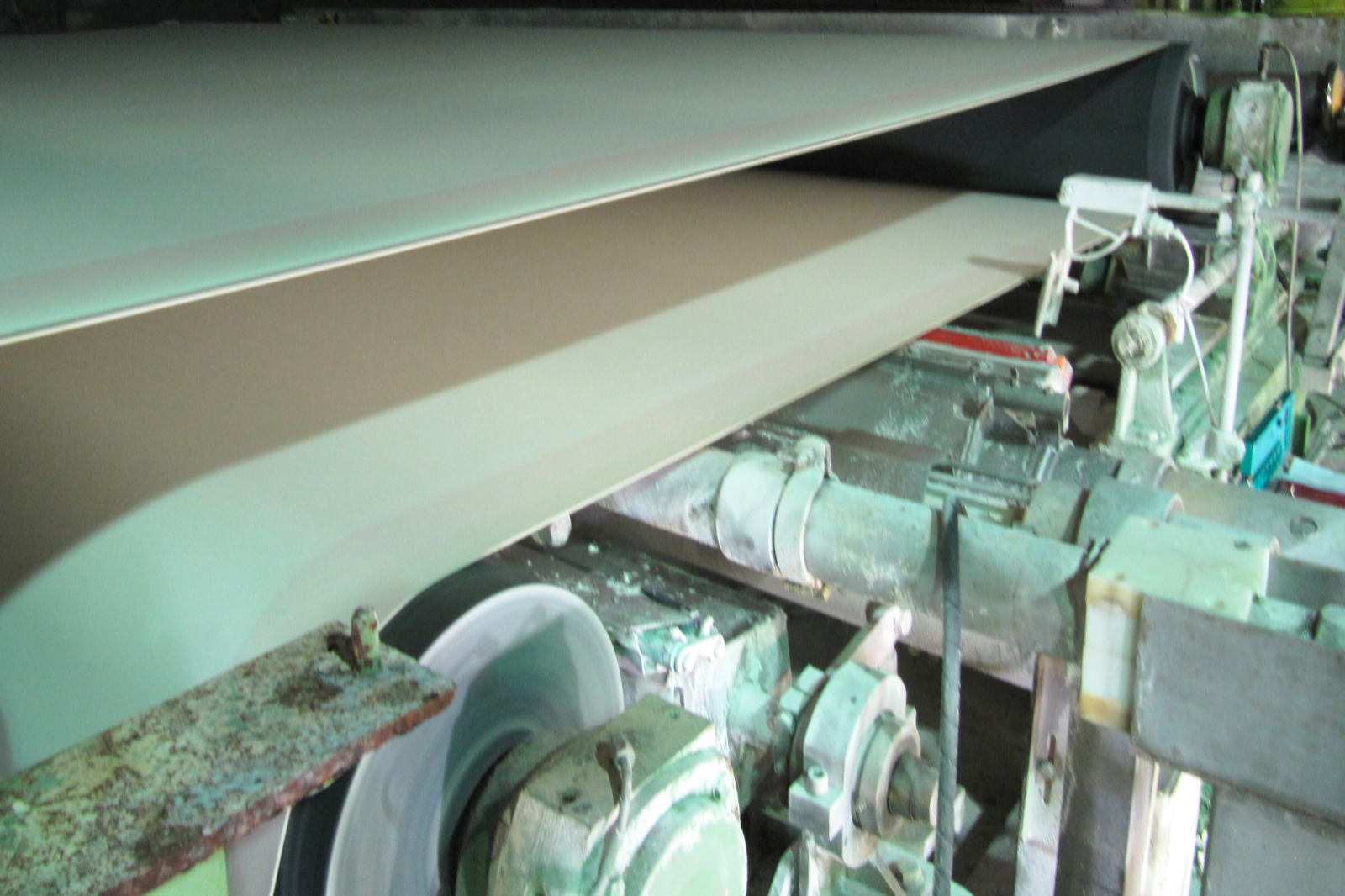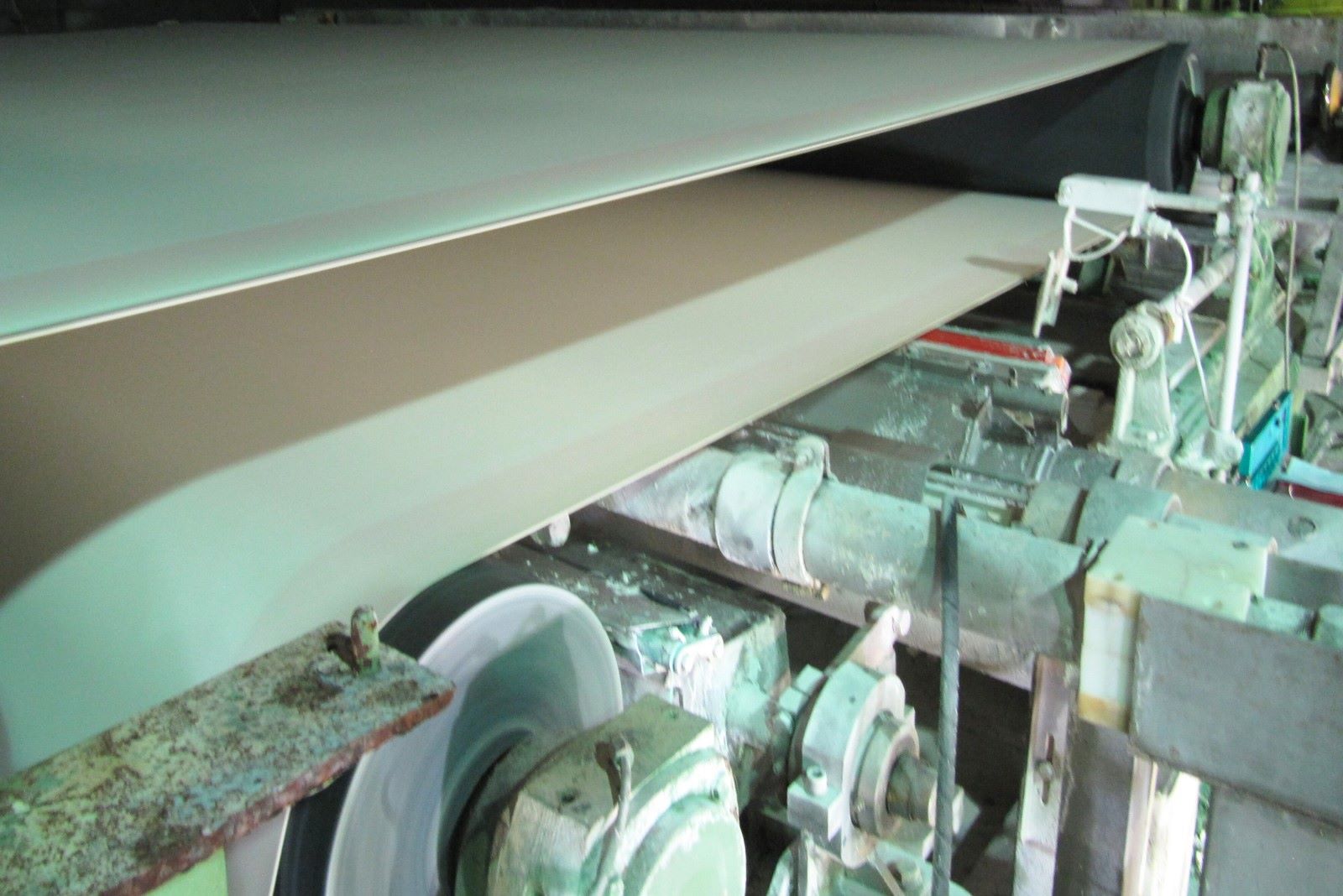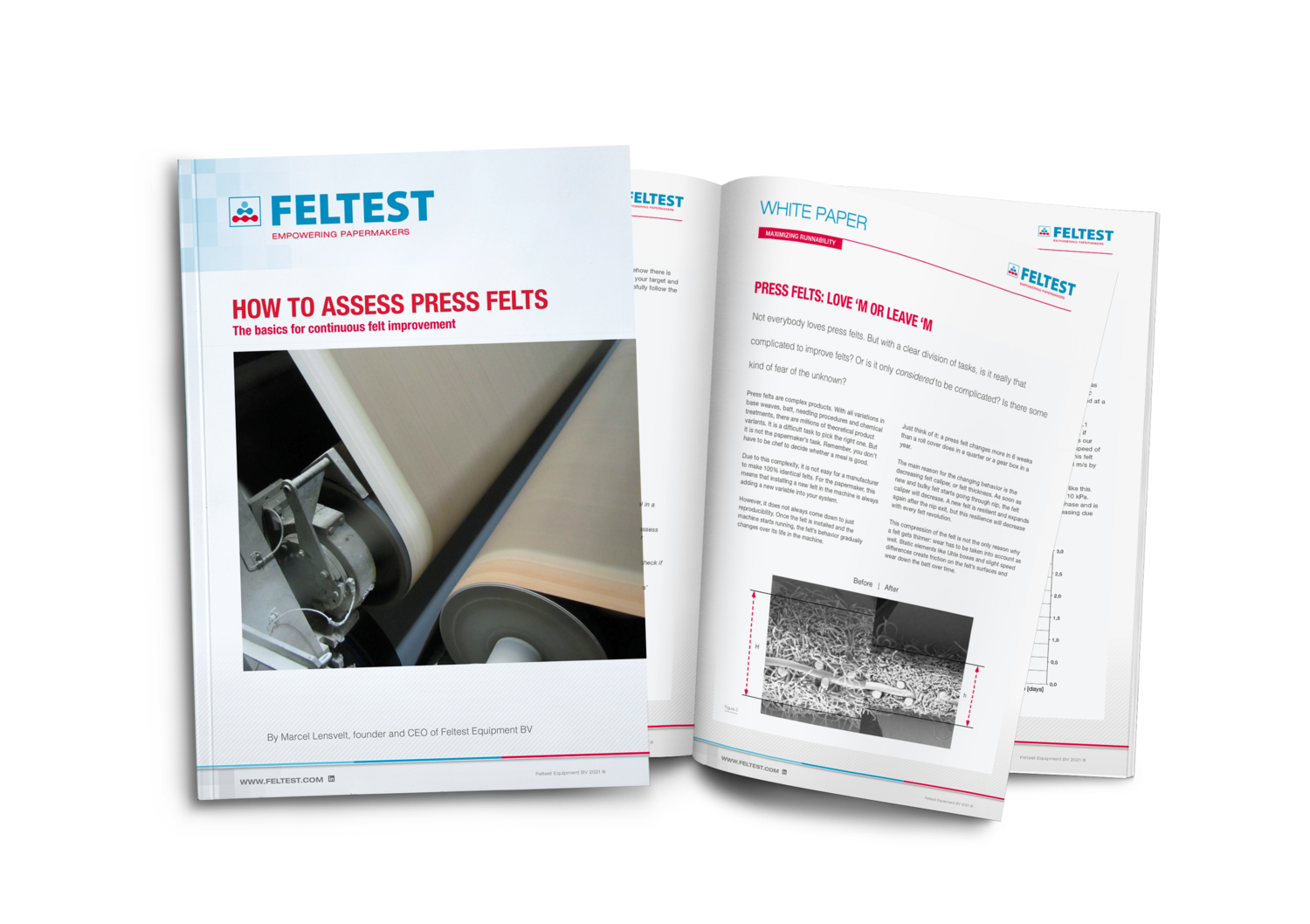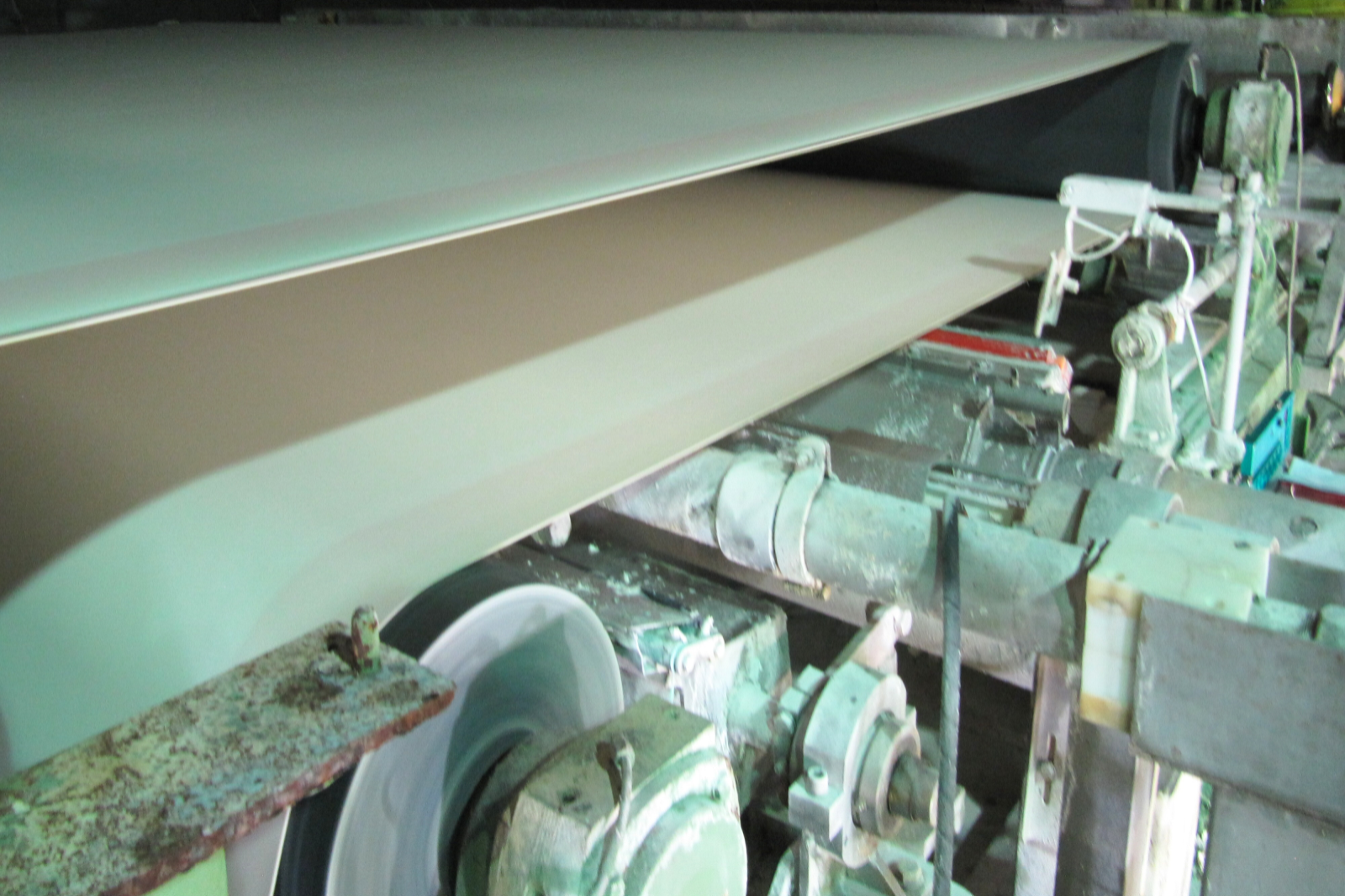How permeability changes over a felt’s lifetime

The most important job of the press felt on a paper machine is to remove the water from the sheet, without harming the sheet’s strength or surface quality.
The more water can be removed, the dryer the sheet will exit the press section—and the stronger it will enter the dryer section. This reduces the risk of sheet breaks and improves the runnability of the whole machine. And for the papermaker, this means fewer fires to put out, and usually, tons more paper.
But it’s not all plain sailing. Compared to other machine components, like press roll covers or the machine frame, press felts change behavior over their lifetime, especially in their level of permeability.
During the break-in period
At the start of the break-in period felts are generally a little too open, which means the permeability is too high. This causes excessive rewetting at the nip exit and prevents the machine from running at its maximum production speed.
After this start-up phase, you should see a period of a relatively stable permeability, where the felt performs at its best. This is because, over the course of the break-in period, the permeability drops as the felt gets compressed, or ‘compacted’, which creates more resistance for the water to flow through the felt. In turn, this compaction helps avoid re-wetting: more flow resistance means the water is less likely to re-enter the sheet again. And when we’re looking in the other direction—water flowing out of the sheet—a little resistance in the felt helps keep the flow speeds on an acceptable level, so fewer fines and fillers get washed out of the sheet.
In short: a press felt needs a little flow resistance, so the permeability must not be too high.
Need to speed up the break-in period?
If you find the break-in period of a particular felt too long, you can always try to compact the felt a little faster. By feeding the press nip with extra water, the nip impulse will be higher and the felt will compact more. So simply add some water through low pressure showers, or reduce the vacuum on the uhle-boxes, and the felt will enter the nip with more water and the magic of compaction and reduced felt permeability will happen.
If you do this, it’s important to take little steps and don’t overdo it, because too much water in the nip can lead to other problems like sheet crushing, press bouncing and barring, or even ripped felts. Simply increase the amount of water in the felt a little and monitor the felt permeability with the Feltest Airspeed by taking two measurements per working shift.
On its last legs
Near the end of a felt’s life, the airflow through the felt at the uhle box can go up again. If this happens, it usually means only one thing: the felt is wearing out.
Friction causes the batt to slowly wear down—especially the top batt, which is prone to wear due to its fine, thin fibers that are constantly rubbing the uhle box covers. A worn felt with less and coarser batt can allow water to flow easily through the felt, and unfortunately in the wrong direction: back into the sheet. Rewetting returns! As the felt batt slowly wears away, risks of felt base marking in your sheet increase. Now you’re left with one option: cut the felt and install a new one.
Want to learn how to improve your press felts?

Take a look at our whitepaper:
How to Assess Press Felts - the basics for continuous felt improvement



